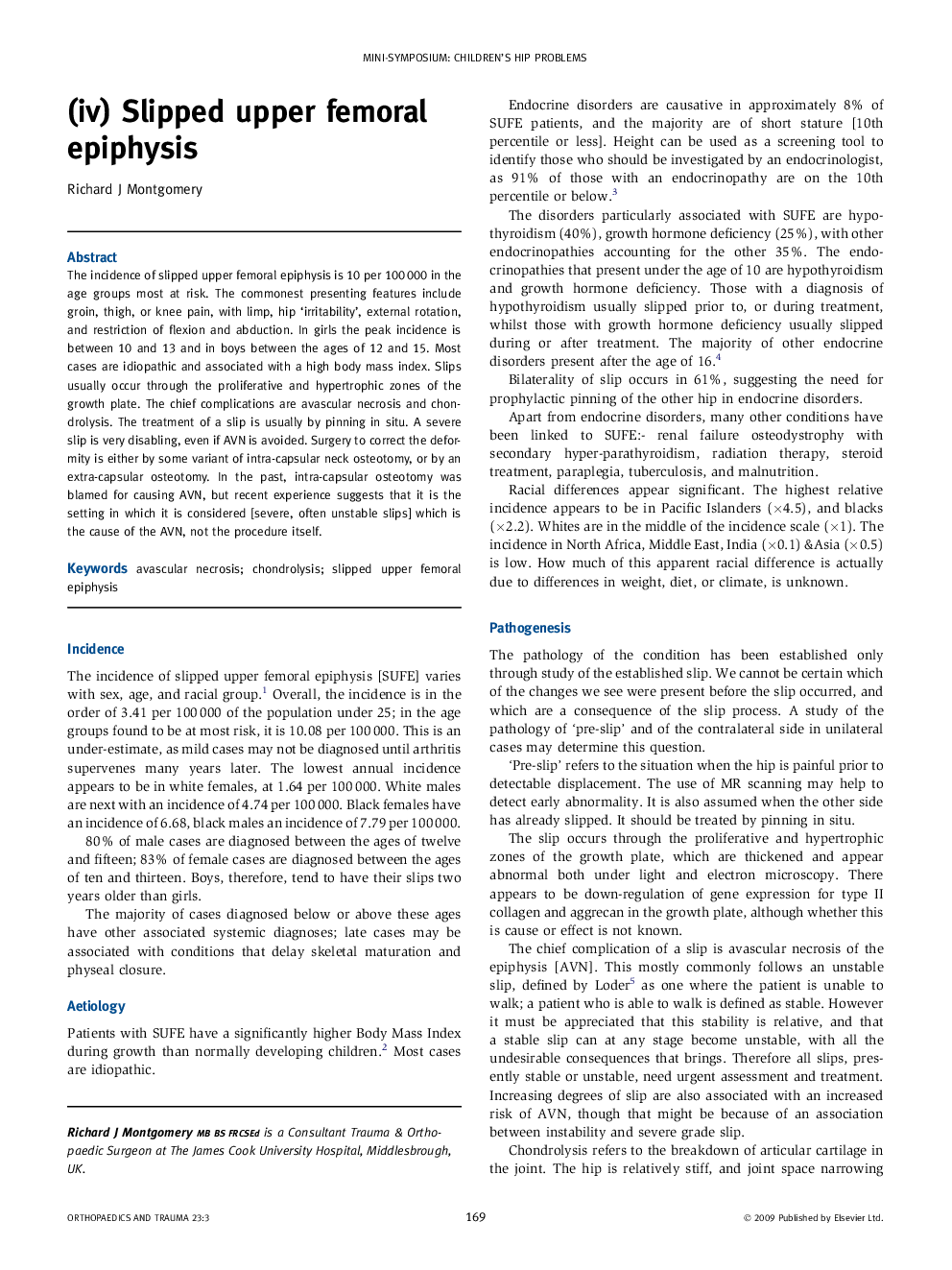| Article ID | Journal | Published Year | Pages | File Type |
|---|---|---|---|---|
| 4080680 | Orthopaedics and Trauma | 2009 | 6 Pages |
The incidence of slipped upper femoral epiphysis is 10 per 100 000 in the age groups most at risk. The commonest presenting features include groin, thigh, or knee pain, with limp, hip ‘irritability’, external rotation, and restriction of flexion and abduction. In girls the peak incidence is between 10 and 13 and in boys between the ages of 12 and 15. Most cases are idiopathic and associated with a high body mass index. Slips usually occur through the proliferative and hypertrophic zones of the growth plate. The chief complications are avascular necrosis and chondrolysis. The treatment of a slip is usually by pinning in situ. A severe slip is very disabling, even if AVN is avoided. Surgery to correct the deformity is either by some variant of intra-capsular neck osteotomy, or by an extra-capsular osteotomy. In the past, intra-capsular osteotomy was blamed for causing AVN, but recent experience suggests that it is the setting in which it is considered [severe, often unstable slips] which is the cause of the AVN, not the procedure itself.
